Recent Articles
Popular Makes
Body Types
2018 Chevrolet Bolt vs. 2018 Nissan Leaf: Which Is Best?
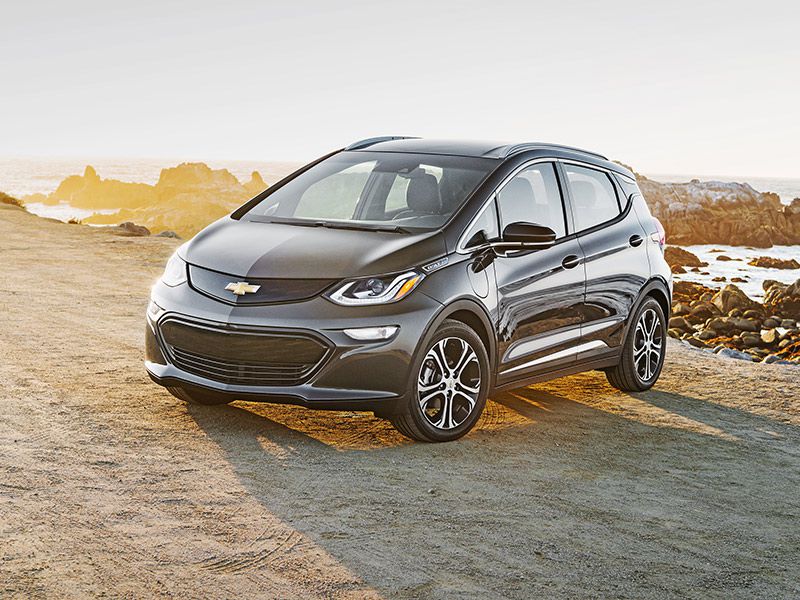
2018 Chevrolet BoltEV hero ・ Photo by Chevrolet
When it comes to all-electric vehicles from mainstream brands, the Nissan LEAF has been the long-time leader. In fact, Nissan has sold nearly 120,000 of them since the LEAF first went on sale here in 2010. The car is also all-new for 2018, so that it’s more appealing — and able to provide a longer driving range — than ever before.
But it faces its toughest competition ever, too. The Chevrolet Bolt hit the market at the end of 2016 and immediately became the top mainstream alternative to the LEAF. After all, they’re both small hatchbacks that go well beyond just offering all-electric powertrains. They can supply advanced infotainment, safety, and luxury features as well. But which is the best?
Range and Charging
One of the most important selling points of an electric car is its all-electric driving range. And while your results may vary, the EPA shows a very clear advantage for the 2018 Chevrolet Bolt. According to the official ratings, the 2018 Nissan LEAF checks in with a range of 151 miles on a single charge. In the Bolt, however, you can go nearly 60 percent farther. It has a 238-mile driving range.
Both vehicles do charge close to the same rates. For example, using a 240-volt charger, the Bolt adds 25 miles of range per hour versus 22 per hour for the LEAF. A commercial DC fast charger can then deliver 90 miles of range in about 30 minutes for both vehicles. Of course, with its bigger battery capacity, the Bolt will take longer to charge completely.
Chevrolet Bolt
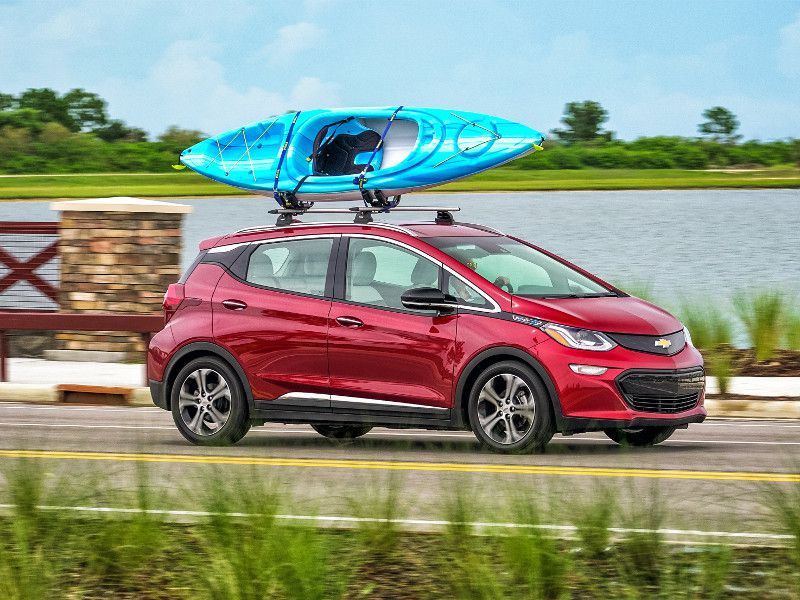
Photo by General Motors
Efficiency
Although a long driving range is great as a practical matter, many green customers are just as interested in EV efficiency. This only makes sense, since you don’t want to be wasting energy with an inefficient motor no matter where the energy comes from.
The EPA rates efficiency in “MPGe.” This measures how far an EV can travel using the same amount of energy that’s in a gallon of gasoline. The Bolt’s EPA ratings of 128 MPGe city/110 MPGe highway/119 MPGe combined compare to the LEAF at 125 MPGe city/100 MPGe highway/112 MPGe combined. For comparison, the most efficient 2018 Tesla Model S is listed at 102/105/103 in the same categories.
Chevrolet Bolt
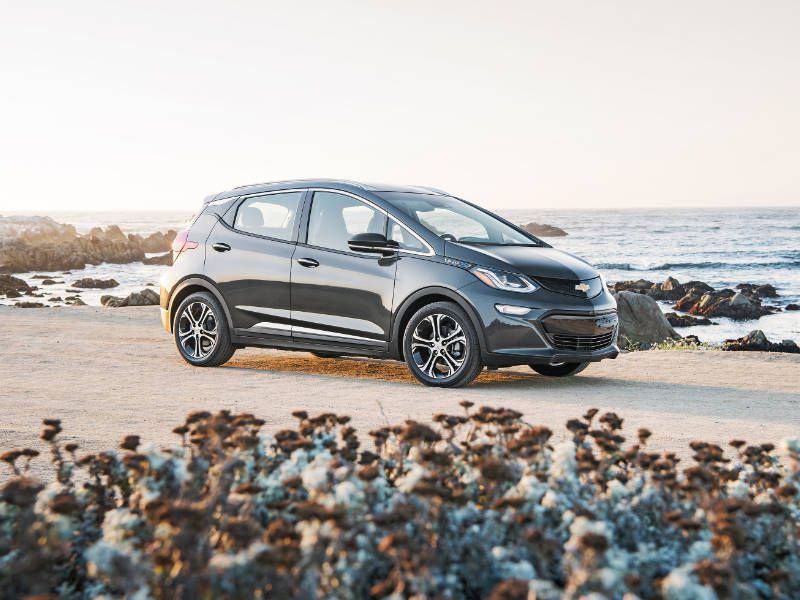
Photo by General Motors
Pricing
Both the LEAF and the Bolt continue to qualify for the U.S. government’s $7,500 federal tax credit. The 2018 LEAF starts at $29,990, which is nearly $700 less than for the older 2017 model. Subtracting the tax credit lowers your net cost to $22,490. The entry price for the Bolt is significantly higher, at $37,495, which translates into a net cost of $29,995.
True, the Bolt has standard equipment that’s missing from the Leaf, like an infotainment system with a 10.2-inch touchscreen, a mobile Wi-Fi hotspot, and Android Auto/Apple CarPlay smartphone integration. It also has its range and efficiency benefits. But if price is your No. 1 consideration, the LEAF undercuts the Bolt by $7,505.
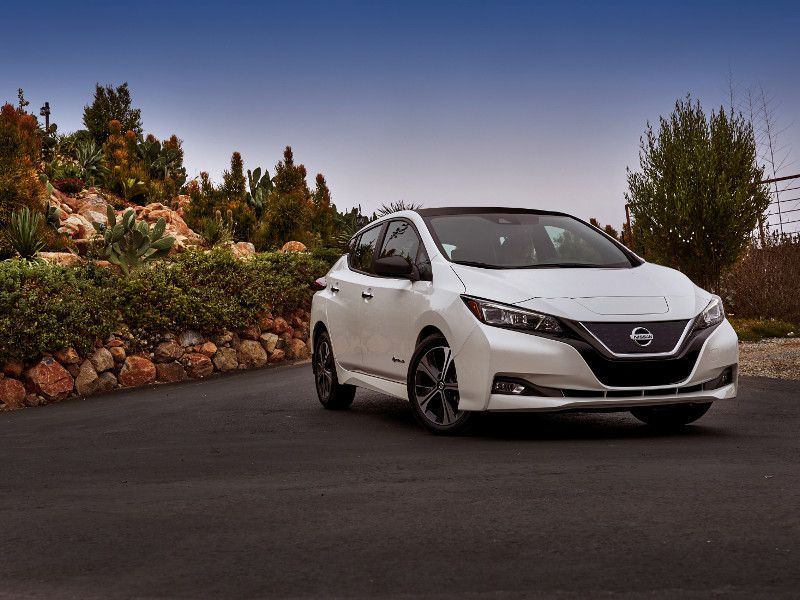
Photo by Nissan
Exterior Design and Content
Despite its price advantage, the Leaf is more than a foot longer than the Bolt. To put it into mainstream terms, the LEAF is about the size of a compact hatchback, while the Bolt has subcompact dimensions. Since the Chevrolet is also a little taller, it has more of an upright look. That’s accented by standard LEDs for signature lighting, daytime running lights, and taillights. Strong lines and 17-inch aluminum-alloy wheels are also standard.
The LEAF features a sleeker, more aerodynamic look that extends from a futuristic grille design to a sporty rear diffuser. It does have less standard content, but Nissan lets you catch up with a relatively long list of options. Interestingly, both have “floating” roofs with blacked-out rear pillars. We think the LEAF wears it best, though.
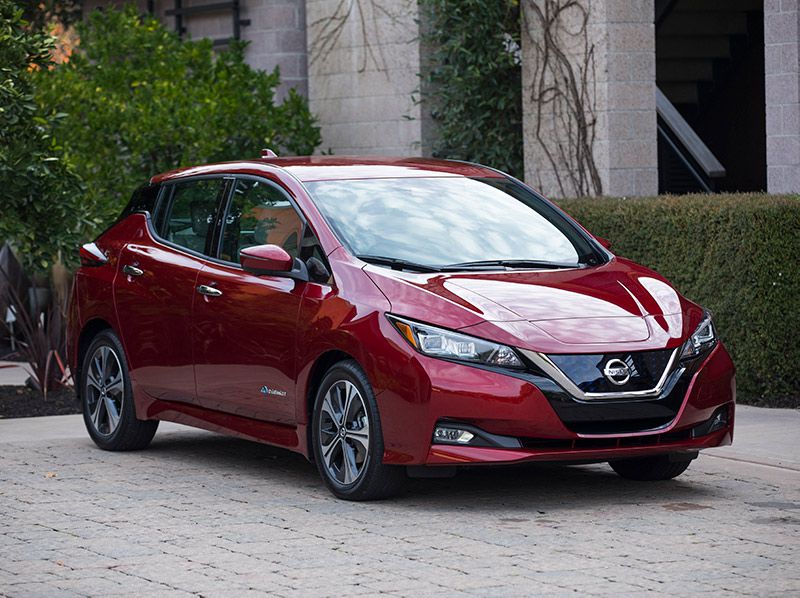
Photo by Nissan
Passenger and Cargo Space
Our favorite small cars — regardless of their power source — can deliver comfortable seating and versatile cargo solutions despite their modest exterior dimensions. Both the Bolt and LEAF do exactly that, but the Bolt is the surprise winner here when you look at all the numbers. Again, keeping in mind that the Bolt is smaller on the outside, it offers more passenger volume — including an important three extra inches of rear-seat legroom.
The Bolt also has a major advantage in overall cargo space. The LEAF's design leaves 23.6 cubic feet of cargo room behind the rear seats, which compares to the Bolt at 16.9. But folding the back seats opens up 56.6 cubic feet of storage for the Bolt and just 30 for the LEAF. In other words, the Bolt has almost 90 percent more maximum cargo space.
Chevrolet Bolt
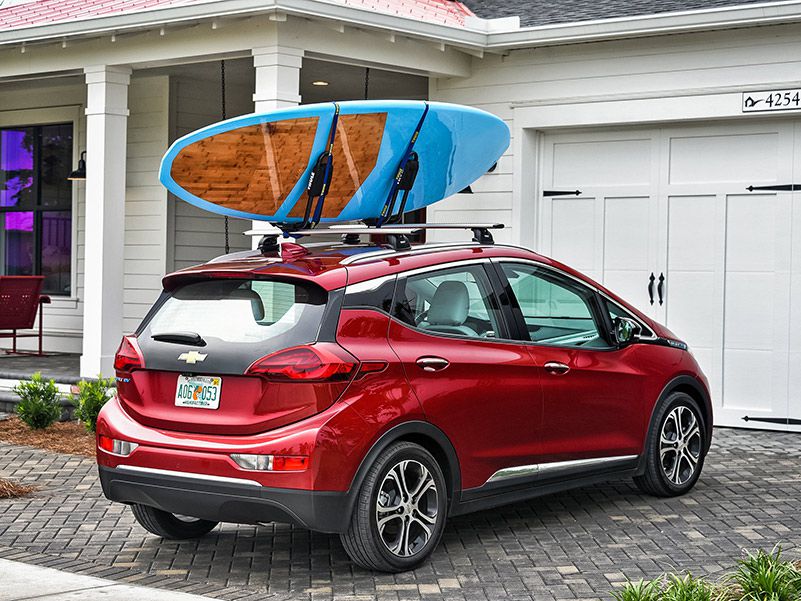
Photo by General Motors
Interior Design and Content
The 2018 Nissan LEAF and 2018 Chevrolet Bolt each have modern and attractive cabins, and they each offer a fair amount of content. For comfort features, the two cars can both serve up heated front and rear seats, leather upholstery, automatic climate control, and a heated and leather-wrapped multifunction steering wheel. Yet the only one to come with power-adjustable seating is the LEAF, which is available with a six-way power-adjustable driver’s seat.
As for interior design, we know this can be subjective, and that some folks will prefer the more traditional layout in the LEAF. But we think the futuristic look for the Bolt is definitely more eye-catching, thanks in part to its dramatic dashboard and floating center stack. In the end, we wish both cars had more extensive power seating adjustments, but give the nod to the Bolt for its design.
Chevrolet Bolt
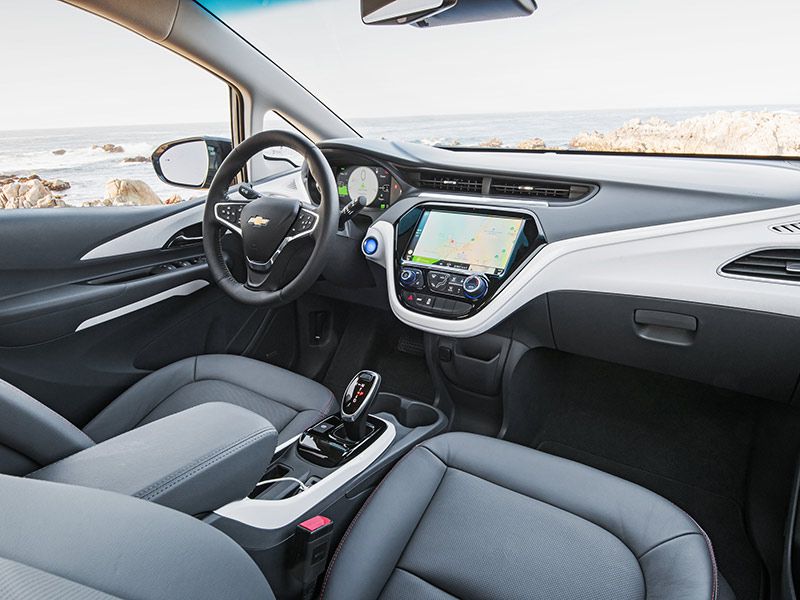
Photo by General Motors
Infotainment Technology
The Bolt and LEAF both bring the kind of infotainment technology you expect from cars with high-tech powertrains. It makes for another close competition, since these two cars both showcase the latest smartphone-integration technology — with Android Auto and Apple CarPlay integration — plus the usual suspects like Bluetooth, SiriusXM Satellite Radio, and a seven-speaker Bose audio system. The LEAF further adds navigation and HD Radio, while the Bolt offers wireless smartphone charging.
The Bold is also the only one of the two with a mobile Wi-Fi hotspot, and both that and the upscale smartphone tech are standard for the Chevy. Additionally, the standard touchscreen for the Bolt is a generous 10.2 inches, while the standard audio system carries six speakers. The LEAF comes standard with a five-inch touchscreen and four-speaker audio. Yet it’s hard to forgive the Bolt for lacking integrated navigation, so we have to give the edge to the LEAF.
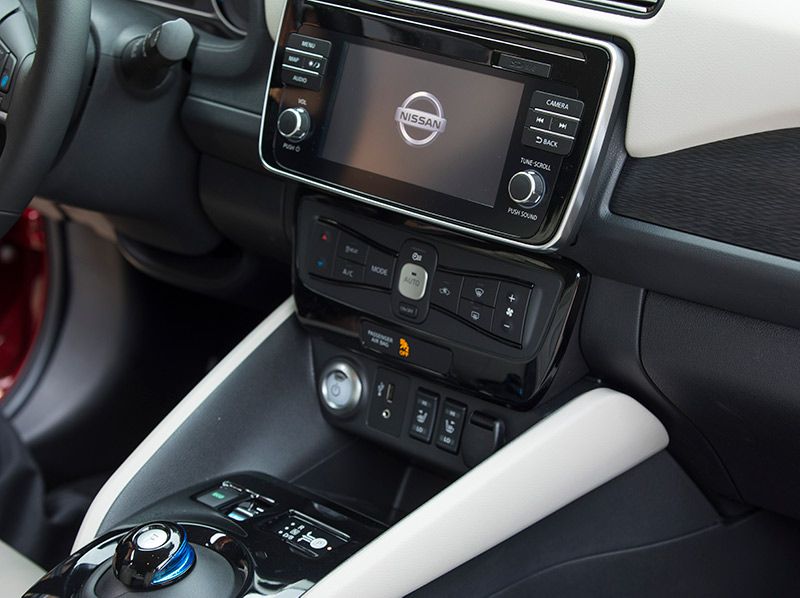
Photo by Nissan
Safety Technology
Both the LEAF and the Bolt have a standard rearview camera and are available with automatic emergency braking, lane-change assistance, a blind-spot system with a rear cross-traffic alert, and an around-view monitor. Moreover, both have their own exclusive safety features. For the LEAF, it’s adaptive cruise control and a drowsy-driver monitor. The Bolt, meanwhile, boasts a rearview mirror camera: A rear-facing exterior camera sends live video to a display in the rearview mirror, where it can provide a significantly wider field of vision than a typical mirror with no blind spots.
In the end, the LEAF wins this category for the same reason it won in infotainment technology: It offers an expected feature, in this case adaptive cruise control, that the Bolt is missing. Indeed, although the actual safety benefits are still up for discussion, the Leaf even provides a certain measure of self-driving ability.
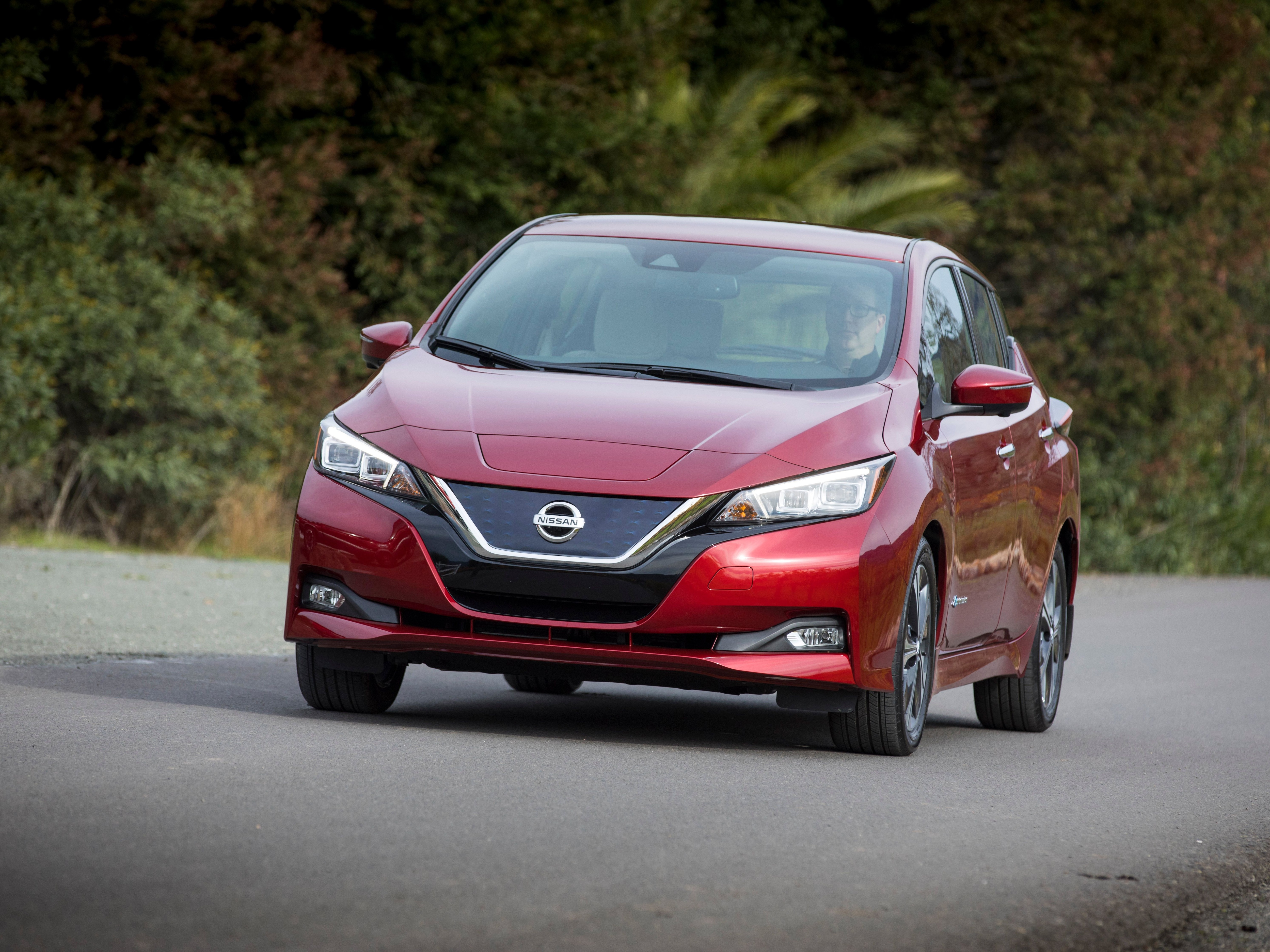
The Verdict
The 2018 Nissan LEAF and 2018 Chevrolet Bolt are two very competitive electric vehicles. That said, the Bolt goes the extra mile in most of the categories. Significantly, that starts with the ability to go 85 extra miles on a single charge of electricity. The Bolt is more efficient to drive, too. It also offers more standard infotainment technology that includes a 10.2-inch touchscreen and a mobile Wi-Fi hotspot. From a practical standpoint, the Bolt is roomier than the LEAF as well, with more passenger volume, more rear legroom, and much more total cargo capacity.
The thing is, the Bolt doesn’t have some pretty common technologies, such as integrated navigation, power-adjustable seats, or adaptive cruise control. The Bolt is also noticeably more expensive than the LEAF. Nonetheless, since range anxiety is such an important factor in buying an EV, we think most drivers would prefer to make those sacrifices to get the Bolt’s longer driving capability — and to get the Bolt in general.
Chevrolet Bolt
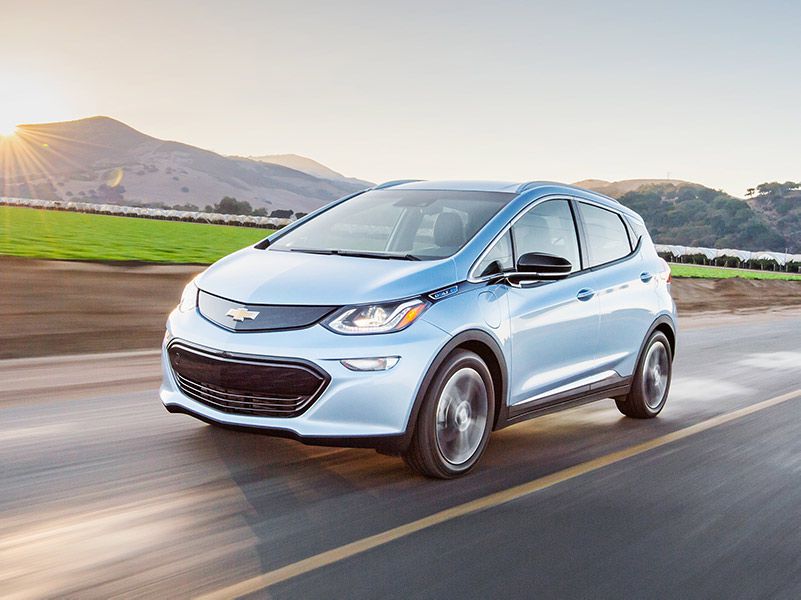
Photo by Chevrolet